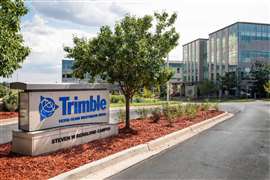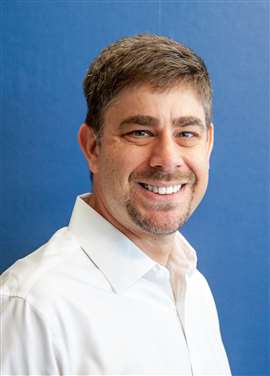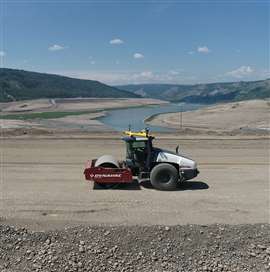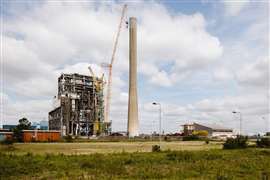Read this article in 中文 Français Deutsch Italiano Português Español
Q&A: Trimble’s Senior VP Mark Schwartz
04 January 2024
From internal software decentralisation to artificial intelligence and education, there is plenty on the horizon for the global construction industry.
 Trimble Inc. headquarters in Westminster, Colorado, US
Trimble Inc. headquarters in Westminster, Colorado, US
US-based software, hardware and services technology company for global building and construction, Trimble, has approached technology acceleration by expanding its software portfolio through mergers and acquisitions.
Since 2021, the company has acquired Ryvit, a construction integration platform-as-a-service (iPaaS), Transporeon, a cloud-based transportation management platform, B2W Software, a provider of estimating and operations solutions for the heavy civil construction industry, and AgileAssets, a provider of enterprise infrastructure asset management software.
It’s a strategy that provided the company specialised talent across the construction software and services tech sectors but created a decentralised network within.
Trimble senior vice president Mark Schwartz says the company navigated the flurry of M&A with a “digital transformation” – combining their acquisitions into one “mega business unit.”
“We’ve consolidated the company’s entire software portfolio into one kind-of business,” he said. “We’ve gone through our digital transformation, [and] we’ve kind of gone from a heavily decentralised model… to centralised.”
Schwartz said eliminating silos within the company should help workflows and eliminate friction.
He said it’s an example of the company trying to do inward what they provide outward.
“We are going to drive streamlined workflows and production. That’s what we do for our customers,” said Schwartz.
Artifical Intelligence
 Mark Schwartz
Mark Schwartz
Along with internal structural changes, Schwartz said his company is adapting to advances in artificial intelligence (AI).
“What I think has the most near-term potential for the industry is tied to human-aided AI,” he said. “How do you take the elements of a job and make it better and faster through the use of AI?”
Comparing construction concepts with everyday AI applications, like ChatGPT, Schwartz said the technology is adept at creating a framework.
“I put in, ‘write me a recommendation letter,’ and it spits out 500 words,” explains Schwartz, noting that the results are not infallible, but it creates a template for the user.
He continued, “When you apply that framework to design, take someone that does a steel design, and then has to go to this really nuanced, detailed fabrication element, the computer is able to say, ‘I just looked at your last 3,000 designs, and you’ve done that column 2,000 times.’ It can take what used to be a very long, detailed process and shorten it substantially.”
‘Human-aided’ labour
While advancing AI, centralising and automating are generally seen as net positives to a company’s financial health, there are concerns that people, and their jobs, might be pushed out of the workforce.
Schwartz, though, sees these elements reducing the labour shortage and increasing the need for more skilled workers.
“[AI] is not going to be perfect,” he reiterated. “Everybody’s worried AI will replace humans, and we don’t really see it that way. It’s not going to build the building.
“[It increases] our ability to use very expensive human capital on the very important things and not some of the more mundane things.”
In addition to human’s needing to aid and assist AI-powered and automated technology, Schwartz noted there is an inverse relationship, too.
“Is it easier to train an excavator operator to be great or is it easier to use technology to make them great?” asked Schwartz rhetorically, noting the volume of training operators via advanced tech is, in theory, greater than conventional training. “We can do that at scale verses training an operator one-at-a-time.”
Increase in overseas clients
Amid the labour shortage, Schwartz said Trimble’s increased sales with countries outside North America point to an industry adjusting to it.
“What we’ve seen over the last year; a surprising geography for us has been India,” he said.
The Trimble VP noted that increased labour costs and shortages in India and China, he believes, led to more investment in technology.
“India became heavily invested in adoption of our technology because, suddenly, labour got very expensive,” Schwartz said. “I’ve seen a substantial change in the last 12 months of tech adoption and inflection.”
Engaging the youth
As the industry evolves with technology, Schwartz said it was vital to engage and educate young people to foster future talent.
In 2012, Trimble acquired SketchUp from Google.
SketchUp is a suite of subscription products that include a 3D modelling computer-aided design (CAD) program utilized across a broad range of professional sectors.
“I think the point is, how do we make construction the cool industry for today’s youth to go into?” asked Schwartz. “It’s not hammering a nail into a wall necessarily, and you have to think about it holistically.”
While there are plenty of uncertains as it pertains to the digital age, Schwartz and Trimble see a path forward by educating the future using modern tools, hardware and software.
STAY CONNECTED


Receive the information you need when you need it through our world-leading magazines, newsletters and daily briefings.
CONNECT WITH THE TEAM













